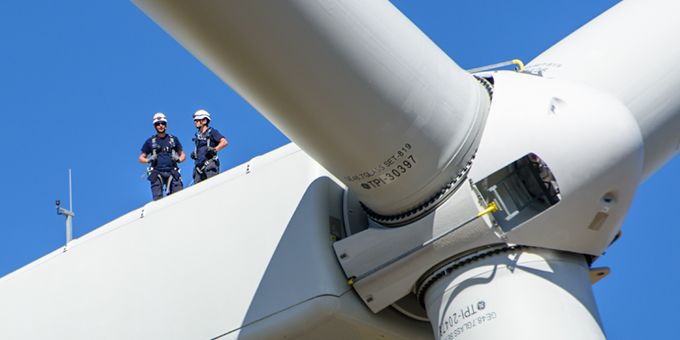Public airports across the U.S. face a similar challenge: a fixed revenue model with limited opportunity for growth. Fortunately, many have an untapped resource that they can turn into a source of predictable, long-term income – the open space around their runways.
 Monetize That Runway!
Monetize That Runway!

John Karamanlis, Business Development Manager, EDF Renewables North America | EDF Renewables North America
Public airports across the U.S. face a similar challenge: a fixed revenue model with limited opportunity for growth. Fortunately, many have an untapped resource that they can turn into a source of predictable, long-term income – the open space around their runways.
Siting solar projects at airports creates win-win situations for renewable energy developers as well as airports. The developer benefits from access to open land, and the airport benefits from 20+ years of steady revenue earned by leasing the land. Best of all, this additional revenue is passive income that requires no effort or involvement from the airport!
The process of leasing land for solar development is straightforward and simple. It begins with a conversation between EDF Renewables (EDFR) and the airport to explore the potential project scope and answer any initial questions. Following that, the parties enter into a lease option agreement (typically a one- to two-year term), during which time EDFR further explores the potential for utility interconnection as well as other pre-development aspects of the project. Once it’s determined that the project is viable, the arrangement is formalized with a long-term lease agreement with payments based on an agreed amount per acre used.
Understandably, airport management wants to know what impacts hosting a solar project may have on airport operations, how to successfully navigate local, state, and federal rules and regulations, and in particular, how to ensure compliance with the Federal Aviation Administration (FAA). The short answer is that a well-designed solar facility will integrate synergistically with the airport and not have any adverse impacts on safety or daily operations. Additionally, we are committed to working in close collaboration with airport management to ensure that construction activities, which typically last five to six months, do not affect parking or create traffic congestion.
“A properly designed solar facility will integrate synergistically with the airport and not have any adverse impacts on safety, or daily operations.”
A question that comes up frequently is whether solar panels will cause glint or glare issues for pilots and air traffic control towers. This is something we thoroughly investigate through glare studies, and it’s worth noting that the purpose of solar panels is to absorb sunlight, not reflect it – so glare is generally not a concern with modern, solar-system technology.
As noted, hosting a solar project can be done with little to no involvement from the airport administration. As the developer, EDFR assumes responsibility for all aspects of the project from initial assessment through development, design, financing, construction, and operations. If the airport is interested in powering some or all of its operations with solar, that’s something we’re happy to discuss as well – our subsidiary PowerFlex provides onsite solar, battery storage, electrical vehicle charging, microgrids and energy management systems and can help clients reduce their long-term energy costs, increase resiliency and achieve sustainability goals.
 EDFR has been active in North America since 1985 and has a long history of successfully delivering turnkey wind, solar and energy storage projects, ranging from large utility-scale facilities to local, distributed solutions, including solar at airports. We leverage our industry experience and affiliate relationships throughout the development and commissioning process, so our clients can be confident in our professionalism and ability to complete projects on schedule.
EDFR has been active in North America since 1985 and has a long history of successfully delivering turnkey wind, solar and energy storage projects, ranging from large utility-scale facilities to local, distributed solutions, including solar at airports. We leverage our industry experience and affiliate relationships throughout the development and commissioning process, so our clients can be confident in our professionalism and ability to complete projects on schedule.
The content & opinions in this article are the author’s and do not necessarily represent the views of AltEnergyMag
Comments (0)
This post does not have any comments. Be the first to leave a comment below.
